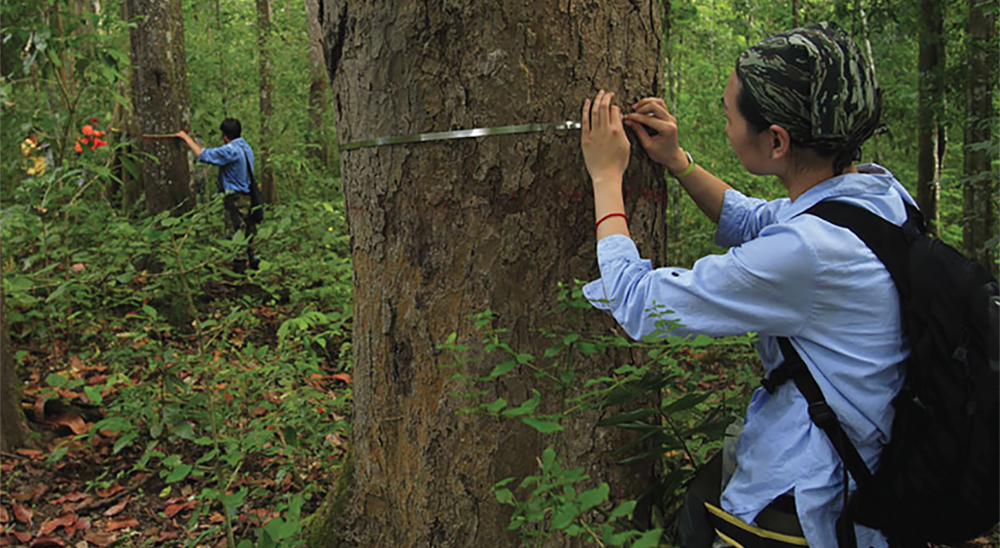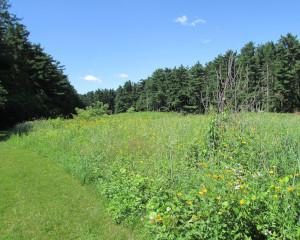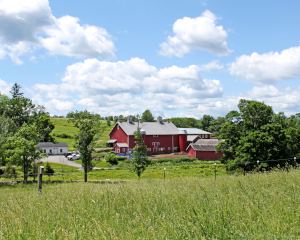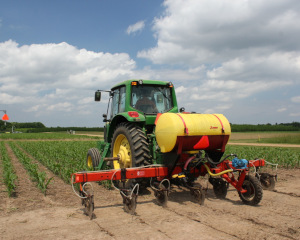
Predicting the Future of Earth’s Forests
Forests are an important buffer against climate change—so understanding forest dynamics is vital.
By Stuart J. Davies
Sign up for our monthly newsletter!
Trees are the most conspicuous form of terrestrial plant life. They have helped to sustain humans as well as many mammals and birds, and they grow nearly everywhere. Yet we tend to take them for granted. Collectively, trees are the forests—perhaps 60,000 different species ranging from fast-growing, short-lived varieties to the towering redwoods that can live many centuries. More than half of all known terrestrial plant and animal species also live in forests, so they are a storehouse of biodiversity; they also provide medicines, food, and fuel for a huge fraction of humanity. Forests also play major roles in climate and hydrological cycles, and they store half of the world’s terrestrial carbon.
Currently, forests absorb nearly a quarter of the carbon dioxide emitted each year by human activities—and thus help to mitigate the impact of climate change. But whether that will continue is uncertain, because forests are changing rapidly through the combined effects of logging and over-exploitation, pollution, disease, invasive species, and a warming climate. Predictive models—of forest cover and of carbon uptake—have been virtually impossible, because we are only beginning to understand the complexity of forest ecosystems, to fully map their diversity, and to unravel how forests actually work. The key to improving our understanding and our predictive ability is to develop an integrated program of systematic data collection and modeling.

Past attempts to model and predict the future of the world’s forests have been severely limited by a lack of fundamental data on how forests work. The most widespread and simplistic forest ecosystem models, so-called “big leaf ” models, characterize the entire diversity of species in a forest with one set of physiological attributes. More advanced models may include two distinct functional categories (e.g., evergreen and deciduous species), but even these fall far short of representing the actual diversity and complexity of forests. The predicted outcomes for the future of forests and climate derived from these current, limited models remain hugely uncertain. Real progress requires models that incorporate vastly greater realism on the processes driving forests. The only way to do this is through an integrated program of data collection and model development.
Over the past 30 years, systematic data collection has been the task of the Forest Global Earth Observatory (ForestGEO), a worldwide network of scientists led by the Smithsonian Institution that now includes 100 partner organizations in 25 tropical and temperate countries. ForestGEO conducts detailed and regular measurements in 64 protected forest plots. The measurements track the birth, growth, and death of over six million individual trees spanning 12,000 species, as well as changes in their ecological context: soil composition, cohabiting microbial and animal species, nutrient flows and other factors. The core data are standardized and shared, enabling comparative analyses. In addition, the network builds local scientific capacity by training hundreds of researchers. Our goal is to expand to 100 observing sites, enough to cover all major forests and forest types, and to transform the network into a permanent global observation system for the world’s forests.
These efforts have already generated new insights into the different dynamics and stresses among forest types:
- Perhaps surprisingly, trees grow quite well on the permafrost in arctic regions. With rapidly rising temperatures from climate change, these boreal forests are seeing longer growing seasons and expansion of their potential range, as treelines move north. But as temperatures rise, the permafrost thaws, causing ground surface subsidence and waterlogging of the soil, effectively drowning trees. The result is net forest loss.
- Temperate forests worldwide (especially in the U.S.) are expanding rapidly as they recover from heavy logging in earlier centuries and get a boost from higher atmospheric carbon dioxide levels, longer growing seasons, and increasing soil nutrients. On the downside, these conditions also favor forest pests and diseases. In Europe, for example, a fungal disease has killed many European ash trees and is now spreading to England. In eastern North America, hemlock trees are dying from a sap-sucking, very temperature sensitive insect that originated in Japan and has been moving north over the past few decades. The mountain pine beetle is killing high altitude white-bark pine trees that previously were protected by cold temperatures.
- Tropical forests in many areas globally are losing ground from logging, land clearing, and hunting practices. In Sarawak, Malaysia, excessive hunting pressures have removed both ground-dwelling and tree-dwelling animals that disperse seeds, thus reducing the ability of the forest to regenerate trees. In another part of Malaysia, an explosion in the population of wild pigs (which Muslim populations do not eat and so don’t hunt) destroyed young trees in neighboring forests to make their nests. Since tropical forests absorb the largest amount of carbon dioxide, these pressures have important implications for the ability of forests to provide a buffer against climate change.
- Nutrients play an important role, but their availability varies enormously. Soils in the central Amazon region are so poor that nutrients are recycled in the living biomass. When those forests are cut down to grow crops, the crops typically fail within a few years. In the western Amazon region, in contrast, soils are rich in nutrients and supported very productive farming in pre-Columbian times. Detailed understanding of such patterns could provide much more effective policies to guide development.
- Forests vary widely from one part of the world to another. The tropical forests of Borneo and the Amazon are each home to thousands of species, but have not a single species in common. Both the famous redwoods and the lesser-known but extremely long-lived bristlecone pines (some as old as 3000 years) are found only in the western U.S.
- Forests tend to be very clumpy. Whether from specific habitat requirements or the dynamics of seed dispersal, species are far from uniformly distributed within even a small forest. Moreover, forests are diverse in function as well, because different types of trees do different things; some thrive in valleys, some on hills, some only in shady sites under taller trees. Variations in soil nutrients and water availability help drive these patterns. This makes sustainable forest management—and modelling forest dynamics—much more complex.
Predictive models capable of handling such geographical variability and ecological complexity will need more detailed data on nutrient cycling, the functional biology of different tree species, the actual carbon fluxes into and out of soils and trees, and on the patterns of interactions between local animal species and trees (whether eating their leaves or dispersing their seeds). This in turn requires not just re-measuring the growth of millions of individual trees and collecting other data from their habitats every five years, but also training more scientists and supporting interdisciplinary teams to analyze, understand, model, and interpret these data. By developing integrated collaborations among these researchers, modelers can help guide which data are necessary for model improvement, and field researchers can ensure that the critical processes driving forest dynamics are not left out of the models. In effect, it requires the creation of a new, quantitative science of forest dynamics. It also requires a long- term commitment.
Equally important is the need to integrate ground-based forest data with the growing space-based monitoring capability. This requires partnerships with relevant space agencies and the interdisciplinary capacity to inter-relate biological and ecological data with the spectral signatures from many different wavelengths observed from above. Accomplishing this would allow for “real-time” evidence of forest change and more global coverage, provide important benchmarks for testing forest models, and might offer governments more effective tools for protecting forests and planning their sustainable usage.
How to Create a Global Forest Observation System
Forest dynamics play a complicated yet poorly understood role in influencing the rate of climate change. That’s because forests are changing rapidly, and because the fraction of the additional man-made carbon emissions forcing climate change that forests will absorb remains unknown. And while climate issues are an important reason to understand forest dynamics, forests are also important as a store of biological diversity and for their impact on watersheds and water supplies.
Only by repeated, standardized observations of individual trees and their surroundings in multiple locations can we gather the data that could enable a scientific understanding of forest dynamics and build predictive models of their interaction with the global climate. To ensure that we are monitoring all forest types and covering all major forests geographically, we need to expand the current observation sites from 64 to 100. Creating and maintaining this expanded observation system, with repeated measurements of about 10 million individual trees, requires an endowment of $100 million. That will enable the necessary global dataset on forests.
To analyze and interpret those data requires building and maintaining an expanded global research team of interdisciplinary forest scientists with a wide variety of expertise. That includes collaborations with space agencies and climate modelers. We expect this research to offer new quantitative insights into forest evolution, species interactions, large-scale landscape change, physiological responses of different species to changing conditions, energy and mass balances within forest ecosystems, and carbon fluxes and storage. We estimate the need for an additional $100 million over ten years to train and sustain the required scientific talent.
The result will be powerful, predictive models of forest dynamics for both improved management and quantitative insights on how forests can buffer or contribute to climate change. This is an extraordinary opportunity for private philanthropy, which can best address the need for a long-term commitment, a multinational research focus, and an intellectual breadth that spans many different disciplines.
Stuart J. Davies is the Frank H. Levinson Chair in Global Forest Science and the director of the Forest Global Earth Observatory-Center for Tropical Forest Science at the Smithsonian Tropical Research Institute.
This article was previously published in Nautilus.

As Ireland transitions from the rich, smoky scent of peat-burning to a more sustainable future, its olfactory heritage is evolving. What will become the next iconic aromatic symbol of Ireland?
Click to watch the documentary trailer.






